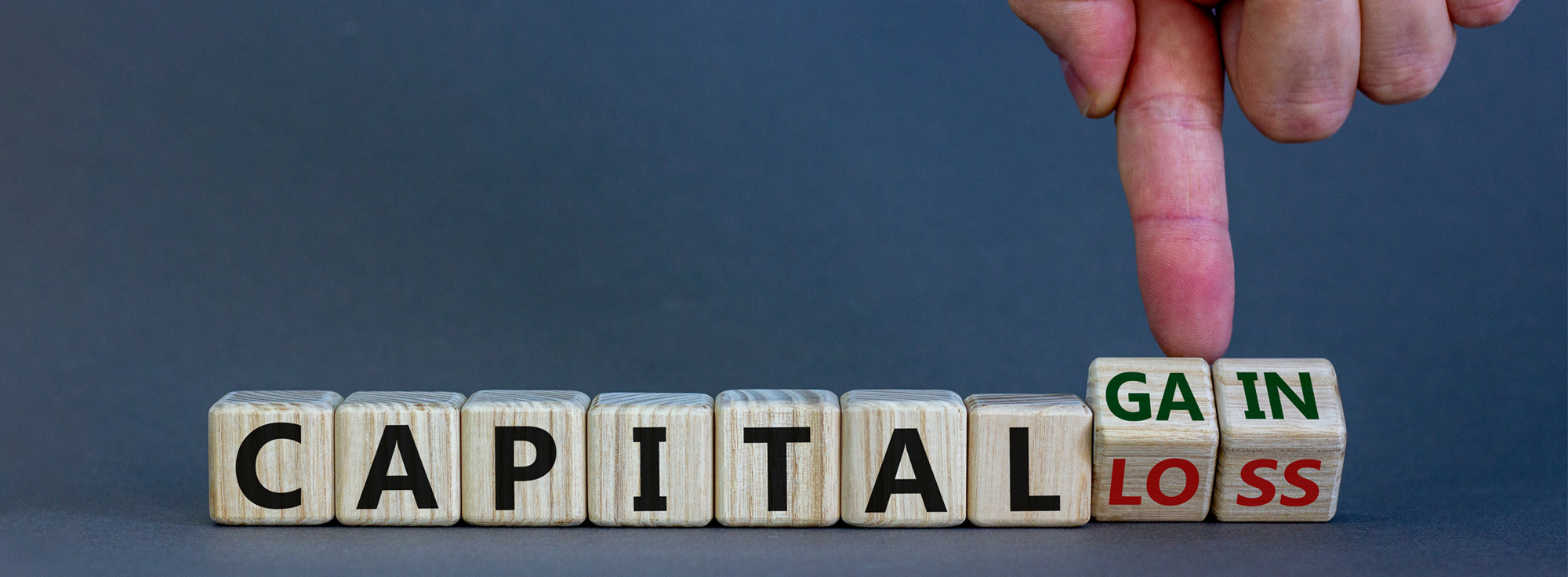Unsure of Stepped-Up Basis? Here is a 5-Point Primer

By Stefan Dunkelgrun, Partner
Stepped-up basis is a tax law that applies to estate transfers when a person receives an asset from a giver after a benefactor passes away. In those circumstances, the asset receives a “stepped-up” basis – which is the market value at the time the benefactor is pronounced deceased.
So, what are the five basic points you need to understand before discussing stepped-up basis with your estate planning professional?
Let’s review.
1. CAPITAL GAINS AND CAPITAL GAINS TAX
Capital Gains Tax is required whenever you make a profit from an investment you made. To determine the necessary Capital Gains Tax, first you need to know your “Cost Basis” or “Basis,” which is what you paid on the investment, plus reasonable expenses like a brokerage fee. The Capital Gains Tax rate is what you sold the asset for minus your “Cost Basis” or simply your “Gain.”
For assets you held for less than a year, the capital gains are taxed as regular income. For assets held for longer than a year, the capital gains are taxed as “Long-Term Capital Gains” and benefit from a reduced tax rate. That reduced tax rate depends on the tax bracket you are in, but it could be 0%, 15%, or 20%.
2. EXCEPTIONS TO CAPITAL GAINS TAX
As with most tax codes, there are a plethora of loopholes and exceptions. The most straightforward way to minimize or avoid Capital Gains tax is to balance it with Capital Losses. As an example, say you invested in asset A and B. Your investment in asset A produced a Gain of $10,000, while your investment in asset B resulted in a loss of $7,000. The government understands that it wouldn’t be completely fair for you to have to pay full Capital Gains tax on asset A without acknowledging the loss you took on asset B. As such, you are allowed to combine them into a net Gain – meaning you only pay tax on the combined $3,000 profit you made.
None of the Capital Gains or losses count on paper; you need to have sold your investments for Capital Gains to be applicable.
Another option to avoiding Capital Gains tax is to do a “like-kind exchange.” For full details on how “like-kind exchanges” work, there many different sections of the Internal Revenue Code are outlining the process; however, a “like-kind exchange” is basically trading in an investment for another of the same kind. An example of a “like-kind exchange” is if you sell an office building, you have a short window of time in which you can buy another building without the IRS considering it a taxable event. Not all types of investments qualify for “like-kind exchanges” and there are intricate laws that apply, so it’s best to consult with an attorney experienced in these transactions before doing anything.
There are tax-advantaged accounts that may have reduced or eliminated taxes, such as Qualified Retirement Accounts (401k, IRA, etc.) and Health Savings Accounts. This article is not a comprehensive analysis of the various account types and their advantages. It is strongly advised that you consult with a financial advisor to explore the options available to you.

3. DO CAPITAL GAINS APPLY TO MY HOUSE?
Capital Gains tax applies to your primary residence only if you made a significant profit from it. Your Basis might be higher than you expect, as your Basis is determined by the purchase price of the house, not your down payment. Permitted additions to the Basis can be things like certain closing costs and the money spent on renovations or improvements to the house. Additionally, if your house sustained damage, the money spent on repairs may be added into the Basis, depending on the type of damage.
As an example, say you bought a home for $400,000 in which $80,000 was a down payment and $320,000 was a mortgage – your Basis would be $400,000. You then went on to make improvements to the house, such as adding a kitchen for $50,000. However, your house sustained flood damage and the cost to repair it was $20,000. Your new basis would include the kitchen addition and flood damage costs and be $470,000. Further down the line, you decide to sell the house for $500,000; after paying a 6% realtor’s commission of $30,000 you receive $470,000. As the Basis of the home and the money you received from the sale are equal at $470,000, there is no Capital Gain and therefore no Capital Gains tax.
Furthermore, there are minimum gains for single people and married couples before it is taxable; for single people the first $250,000, and for married couples the first $500,000 is not taxable. As such, if a single person owned the home with a Basis of $470,000 and it appreciated in value to $750,000, they still wouldn’t have to pay Capital Gains tax on the house.

4. UNDERSTANDING STEPPED-UP BASIS
As previously explored, the sale of an investment incurs taxes on the Gain, which is determined by the difference between the net sales price and your Basis. A higher Basis results in a reduced Gain, subsequently leading to lower Capital Gains tax.
You can increase the Basis of an investment through a Stepped-Up Basis. Typically, if you receive assets in inheritance from a deceased’s Will, the Basis is “stepped-up” to the current market value.
Say you invested in Apple back on January 31st, 1996, when the price was $0.25 a share. If you held onto those shared until August 30, 2021, and that same share is now valued at $150.25 per share, your Capital Gains would be $150.25 minus $0.25, or $150 per share. That $150 per share is now taxable, and in the 15% tax bracket the tax would be $22.50 per share. While $22.50 doesn’t sound like a lot, if you originally invested in a thousand shares your Capital Gains tax would be $22.50 times 1,000, or $22,500.
Alternatively, if one of your parents bought the share for $0.25 in 1996 and retained it until you inherited it upon their passing on August 24, 2021, the share would have a new Stepped-Up Basis of $150 per share. If you turn around a week later and sell the share for $150.25, your Gain is seen as only $0.25 per share. At $0.25 share the tax rate would be $0.0375 per share (or $37.50 for one thousand shares).
5. HOW CAN I BENEFIT FROM A STEPPED-UP BASIS?
While you don’t benefit from a Stepped-Up Basis, your heirs do. Stepped-Up Basis only applies to investments you received upon a benefactor’s death.
The two options are to receive a Stepped-Up Basis from inheritance, or for your heirs to benefit from a Stepped-Up Basis when you die. Wealthy parents, who don’t need any more money themselves, often use Stepped-Up Bases as an avenue to pass along as much wealth as they can to younger generations.
Effective Estate Planning includes making sure the beneficiaries outlined in your Will benefit from a Stepped-Up Basis in as many assets and investments as possible.
About the Author
Stefan Dunkelgrun is a Partner in the Trusts & Estates Law practice and has comprehensive experience in high net worth and ultra-high net worth estate planning, and is seasoned in developing asset protection solutions, drafting complex trusts, business succession planning, and tax reduction strategies. Stefan also advises clients on advanced insurance solutions such as premium finance and life settlements.







